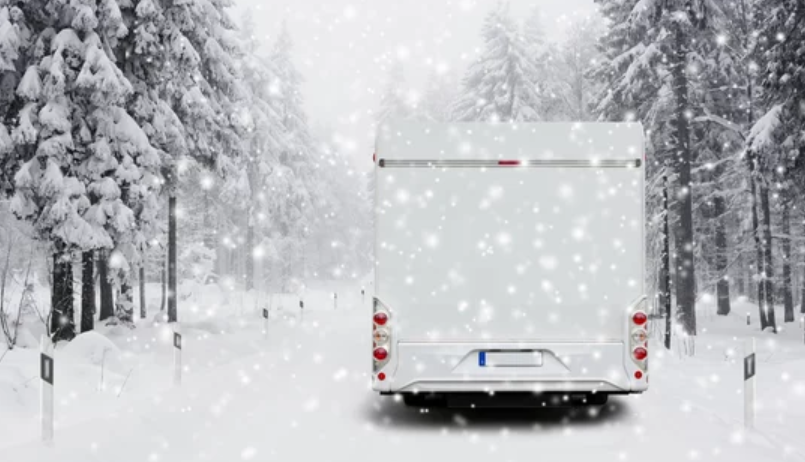
As a camper, questions arise during the winter season such as: “How do I make sure that the water in my heating system or vehicle does not freeze when I am not on site during the day?” or “Can I heat my camper or caravan without water in the boiler?
We answer both questions in this article.
If you are travelling with your vehicle in winter, you can choose between the above options to suit your needs. Both are possible, as long as the operation of the unit is adapted accordingly.
Option 1: If your motorhome or caravan is filled with fresh water, the heating should always remain active. As long as the frost monitor of the Combi, the FrostControl (FC), is exposed to an ambient temperature of >3°C, it remains closed and the water remains in the system. It is important here that the temperature is measured directly at the FC. Experience has shown that it is equally important that only the water runs out of the Combi when the FC is open. Whether the fresh water tank and all water pipes also run empty depends on the installation of the water supply by the vehicle manufacturer. This may or may not be the case. You should check this at your leisure before starting your journey.
You can set 5°C as the lowest room temperature on the heating control. If this is not sufficient to heat the FC because it has been installed further away from the Combi or a warm air pipe, a higher room temperature requirement should be set. This is possible with the CP plus from 5°C in 1°C steps. Simply approach a suitable value slowly. With the CP classic, with the two rotary knobs, level 1 also corresponds to 5°C, level 5 about 30°C. The other levels are in between. Level 2 should therefore be sufficient to keep the FC closed. Please note that such operation is only recommended during a journey. It is not a suitable means of keeping the vehicle frost-free throughout the winter. Short heating times of the heater promote the formation of condensation in the exhaust tract.
If the installation space of the FrostControl is too far away from the heater or completely unheated, a separate heating element for the FC can be purchased from our authorised dealers.
Option 2: If you are travelling without water in the system, the Combi can also be operated. The only important thing here is to set only room heating as a requirement for the Combi. The water heating programme must remain inactive. Make sure that the water tank of the Combi is correctly emptied. Residual water in the combi can get very hot very quickly. The resulting water vapour can irritate the temperature sensors of the heater and lead to a warning message “Water overtemperature detected”. For this reason, we recommend that you leave the FC open when using the vehicle in this way. This way, the water can find its way out of every corner of the fresh water supply during a winding journey. Optionally, you can help by using light compressed air or a balloon that has been put over and filled at the open water taps.
Please note: we recommend both modes of operation only on one trip. Operating the heater in one of the specified options for months should be avoided. The reason for this is that this type of use does not correspond to the intended use of an appliance for camping needs. In addition, under unfavourable conditions, condensation can collect in the exhaust pipe and disrupt the proper operation of the heating system.
With these tips, you’ll be well prepared, even when it’s cold outside. We wish you a wonderful winter holiday.




